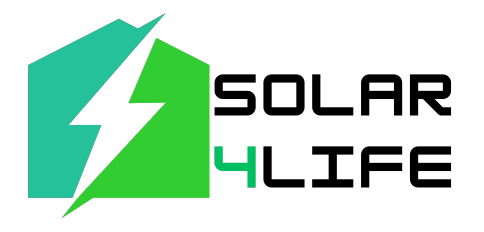Are you ready to harness the power of the sun and reduce your carbon footprint? A solar system can be a fantastic investment for homeowners in the ACT. But with so many options available, how do you find the right system for your needs and budget?
Component For Perfect Solar System
1. Solar Panels
Solar panels are the most visible and essential part of a solar system. Their efficiency, durability, and compatibility with your energy goals dictate the system's overall performance. There are different types of solar panel in the market which are divided in to different types, here are some of them:
Types of Solar Panels
A. Monocrystalline Solar Panels
-
Construction: Made from a single crystal structure, offering higher purity.
-
Advantages:
-
Efficiency: 20-25% efficiency due to high silicon purity.
-
Space-saving: Requires less area for the same output compared to other types.
-
Longevity: Longer lifespan (25+ years) with minimal performance degradation.
-
Aesthetic Appeal: Sleek black color that blends well with modern buildings.
-
Disadvantages:
-
Higher initial cost compared to polycrystalline panels.
B. Polycrystalline Solar Panels
-
Construction: Made by melting multiple silicon fragments, leading to a lower purity level.
-
Advantages:
-
More affordable than monocrystalline panels.
-
Less wasteful manufacturing process.
-
Disadvantages:
-
Efficiency is lower (15-20%).
-
Performs slightly worse in high temperatures due to increased heat sensitivity.
C. Thin-Film Solar Panels
-
Construction: Layers of photovoltaic material deposited onto a substrate like glass or metal.
-
Advantages:
-
They are lightweight and flexible, making them suitable for unconventional applications.
-
Good performance in low-light or diffused sunlight conditions.
-
Disadvantages:
-
Low efficiency (10-15%).
-
Shorter lifespan compared to crystalline panels.
Key Panel Selection Criteria
-
Power Output: Look for wattage ratings that match your energy needs (e.g., 350-450W per panel).
-
Temperature Coefficient: Lower values reduce efficiency losses in hot climates.
-
Durability: Panels should withstand extreme weather (hail, wind, etc.).
-
Warranty: Opt for a performance warranty guaranteeing 80%+ efficiency for 25 years.
2. Solar Inverters
The inverter is the "brain" of the solar system, responsible for converting solar energy into usable electricity for appliances or the grid. They help manage the solar panel's power and convert it into usable energy for the general household.
Types of Solar Inverters
A. String Inverters
-
Description: Connects a series of solar panels into one string, and the inverter converts the combined DC power into AC power.
-
Advantages:
-
Cost-effective and simpler to install.
-
Best for systems with consistent sunlight and uniform panel orientation.
-
Disadvantages:
-
A single shaded or damaged panel can reduce the output of the entire string.
-
Limited monitoring of individual panels.
B. Microinverters
-
Description: Each panel has its small inverter, allowing independent operation.
-
Advantages:
-
Higher overall efficiency, especially in shading or uneven panel conditions.
-
Enables per-panel monitoring and optimization.
-
Easier to expand the system over time.
-
Disadvantages:
-
Higher upfront cost compared to string inverters.
C. Hybrid Inverters
-
Description: Combines the functions of a regular inverter with the capability to integrate battery storage.
-
Advantages:
-
Ideal for systems with energy storage or backup power needs.
-
Can operate in grid-tied, off-grid, or hybrid modes.
-
Disadvantages:
-
Higher cost than standard inverters.
Key Inverter Selection Criteria
-
Efficiency: Aim for an inverter with at least 96% efficiency to minimize losses.
-
Power Rating: Ensure the inverter can handle the system's peak power output.
-
Warranty: Typically 10 years, with options to extend.
-
Monitoring: Choose models with remote or app-based performance monitoring.
3. Solar Battery Storage
Battery storage systems enhance the utility of solar energy, allowing you to store excess energy for later use.
Types of Solar Batteries
A. Lithium-Ion Batteries
-
Chemistry: Most use lithium iron phosphate (LiFePO₄) for safety and longevity.
-
Advantages:
-
High energy density, means more energy storage in less space.
-
Longer lifespan (up to 15 years or 5,000+ cycles).
-
High Depth of Discharge (DoD): Often 80-95%, meaning most stored energy can be used.
-
Low maintenance and quick charging.
-
Disadvantages:
-
Higher initial cost.
B. Lead-Acid Batteries
-
Chemistry: Traditional flooded or sealed AGM (Absorbent Glass Mat) designs.
-
Advantages:
-
Affordable and widely available.
-
Proven technology with decades of use.
-
Disadvantages:
-
Short lifespan (3-5 years or 500-1,000 cycles).
-
Low DoD (50-60%), means you can’t use all stored energy without damaging the battery.
C. Flow Batteries
-
Chemistry: Liquid electrolytes store energy, allowing for deep discharge without degradation.
-
Advantages:
-
Nearly unlimited cycle life.
-
Scalability for large-scale applications.
-
Excellent temperature tolerance and safety.
-
Disadvantages:
-
Bulky and expensive upfront.
Key Battery Selection Criteria
-
Capacity: Measured in kilowatt-hours (kWh), ensure it matches your energy needs.
-
Depth of Discharge (DoD): Indicates how much energy can be used before recharging. Higher DoD values mean more usable power.
-
Cycle Life: A higher cycle life ensures long-term reliability.
-
Integration: Ensure compatibility with your inverter and solar system.
Additional Considerations for the Perfect Solar System
-
System Sizing: Perform an energy audit to determine your average daily consumption and size the system accordingly.
-
Backup Power Needs: Include a generator or extra battery storage for critical loads in emergencies.
-
Smart Technology: Install energy management systems (EMS) to monitor and optimize energy production and consumption.
-
Permits and Incentives: Research local regulations, incentives, and net metering policies to maximize savings.
Key Considerations When Choosing a Solar System:
- Energy Consumption: Determine your household's energy usage to select the appropriate system size.
- Roof Orientation and Shading: Assess your roof's suitability for solar panels, considering factors like orientation and shading.
- Government Incentives: Explore available government rebates and incentives in the ACT.
- System Components: Research different types of solar panels, inverters, and battery storage options.
Finding the Right Solar Installer:
- Local expertise: Look for expert solar panel installers with experience in the ACT.
- Certifications and Accreditations: Ensure the installer is certified by relevant bodies like the Clean Energy Council (CEC) and accredited by organizations like the Solar Accreditation Scheme (SAA).
- Contractor License: Verify that the installer holds a valid electrical contractor license to ensure compliance with local regulations.
- Customer Reviews: Read reviews and testimonials from previous customers.
- Warranty and Guarantees: Inquire about warranties for the system components and installation.
Solar4Life: Your Trusted Partner
At Solar4Life, we're dedicated to providing top-quality solar solutions to homeowners in the ACT. Our experienced team will assess your specific needs and recommend the best system for your home.
Why choose Solar4Life?
- Local Expertise: We have a deep understanding of the ACT energy landscape.
- NETCC Accreditation: We're NETCC Accredited, ensuring we meet high industry standards.
- SAA Accreditation: Our installers are SAA Accredited, guaranteeing professional and safe installations.
- Quality Products: We use only the highest quality solar panels and inverters.
- Competitive Pricing: We offer competitive pricing and flexible financing options.
- Excellent Customer Service: Our team is committed to providing exceptional service throughout the entire process.
Ready to take the next step? Contact us today for a free consultation and learn how solar energy can benefit your home and the environment.

